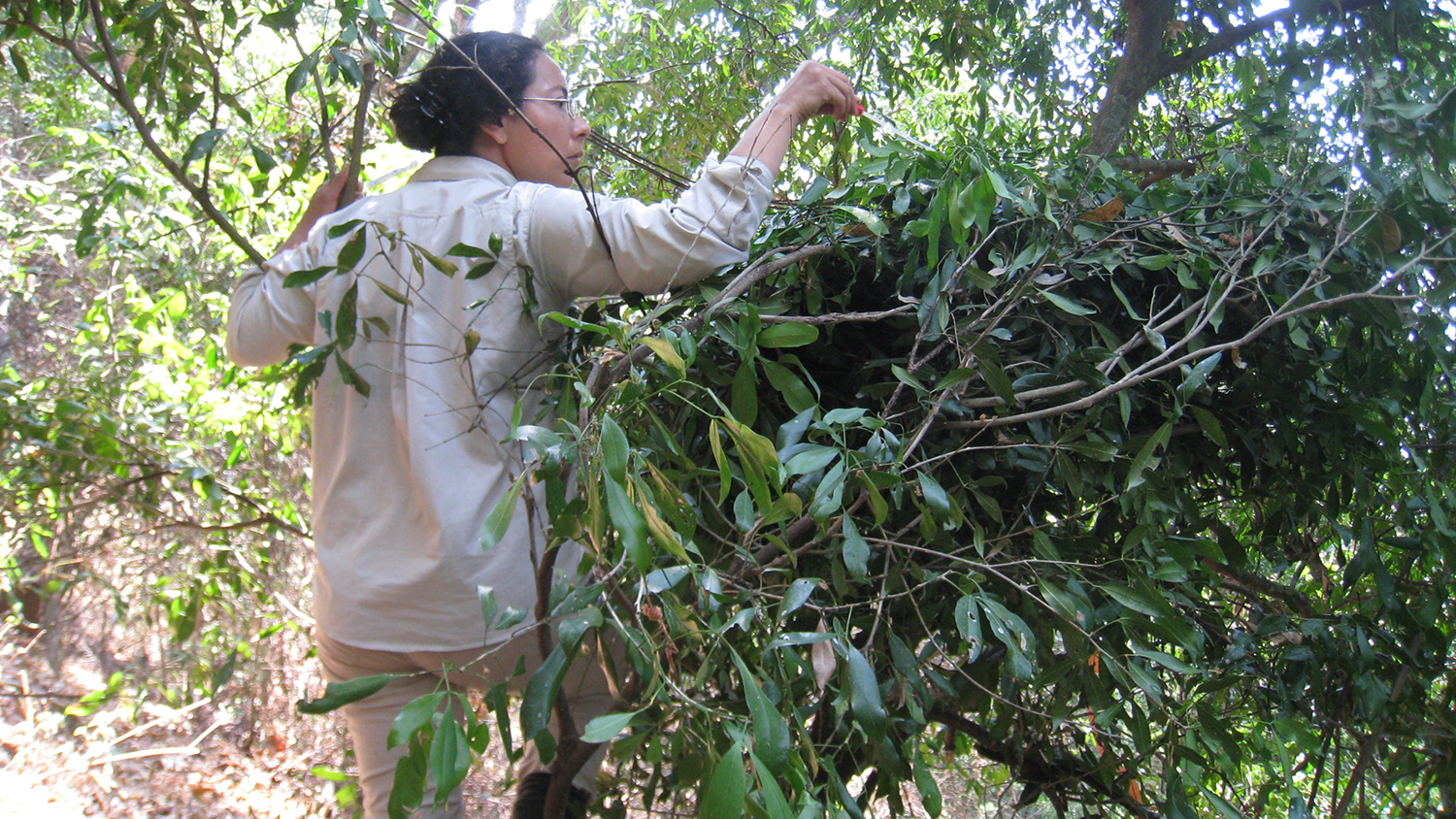Think Chimpanzee Beds Are Dirtier Than Human Ones? Think Again

For Immediate Release
Chimpanzees (Pan troglodytes) appear to keep tidier sleeping arrangements than humans do. That’s one finding of a recent study that evaluated the microbes and arthropods found in the treetop beds that chimpanzees make each night.
“We know that human homes are effectively their own ecosystems, and human beds often contain a subset of the taxa – or types – of organisms found in the home,” says Megan Thoemmes, lead author of a paper on the work and a Ph.D. student at North Carolina State University. “For example, about 35 percent of bacteria in human beds stem from our own bodies, including fecal, oral and skin bacteria.
“We wanted to know how this compares with some of our closest evolutionary relatives, the chimpanzees, which make their own beds daily,” Thoemmes says.
To that end, researchers in Tanzania collected swabs of 41 chimpanzee beds, or nests. The swabs were used to test for microbial biodiversity. At 15 of the nests, researchers also used vacuums to sample the diversity of arthropods, such as insects and arachnids.
Not surprisingly, chimpanzee beds had vastly different biodiversity from human ones. Chimpanzee beds had a greater diversity of microbes, and the types of microbial life reflected the arboreal environments where the nests were found.
Notably, however, chimpanzee beds were much less likely to harbor fecal, oral or skin bacteria.
“We found almost none of those microbes in the chimpanzee nests, which was a little surprising,” Thoemmes says.
“We also expected to see a significant number of arthropod parasites, but we didn’t,” Thoemmes says. “There were only four ectoparasites found, across all the nests we looked at. And that’s four individual specimens, not four different species.
“This work really highlights the role that man-made structures play in shaping the ecosystems of our immediate environment,” Thoemmes says. “In some ways, our attempts to create a clean environment for ourselves may actually make our surroundings less ideal.”
The paper, “Ecology of Sleeping: The Microbial and Arthropod Associates of Chimpanzee Beds,” is published in the journal Royal Society Open Science. The paper was co-authored by Rob Dunn, Matthew Bertone, David Baltzegar, Russell Borski and Kaitlin Coyle of NC State; and Fiona Stewart, Adriana Hernandez-Aguilar, Naomi Cohen and Alexander Piel of the Ugalla Primate Project. The work was done with support from the National Science Foundation under grant number 0953390. The Ugalla Primate Project is supported by the UCSD/Salk Center for Academic Research and Training in Anthropogeny.
-shipman-
Note to Editors: The study abstract follows.
“Ecology of Sleeping: The Microbial and Arthropod Associates of Chimpanzee Beds”
Authors: Megan S. Thoemmes, Matthew A. Bertone, David A. Baltzegar, Russell J. Borski, and Kaitlin P. Coyle, North Carolina State University; Fiona A. Stewart, Ugalla Primate Project, Liverpool John Moores University, and University of Cambridge; R. Adriana Hernandez-Aguilar, Ugalla Primate Project and University of Oslo; Naomi Cohen, Ugalla Primate Project; Alexander K. Piel, Ugalla Primate Project and Liverpool John Moores University; Robert R. Dunn, North Carolina State University and University of Copenhagen
Published: May 16, Royal Society Open Science
Abstract: The indoor environment created by the construction of homes and other buildings is often considered to be uniquely different from other environments. It is composed of organisms that are less diverse than those of the outdoors and strongly sourced by, or dependent upon, human bodies. Yet, no one has ever compared the composition of species found in contemporary human homes to that of other structures built by mammals, including those of non-human primates. Here we consider the microbes and arthropods found in chimpanzee beds, relative to the surrounding environment (n = 41 and 15 beds, respectively). Based on the study of human homes, we hypothesized that the microbes found in chimpanzee beds would be less diverse than those on nearby branches and leaves and that their beds would be primarily composed of body-associated organisms. However, we found that differences between wet and dry seasons and elevation above sea level explained nearly all of the observed variation in microbial diversity and community structure. While we can identify the presence of a chimpanzee based on the assemblage of bacteria, the dominant signal is that of environmental microbes. We found just four ectoparasitic arthropod specimens, none of which appears to be specialized on chimpanzees or their structures. These results suggest that the life to which chimpanzees are exposed while in their beds is predominately the same as that of the surrounding environment.
- Categories:


